Billions in US funding boosts lithium mining, stressing water supplies
The energy transition is driving demand for batteries; funding from the Inflation Reduction Act and other federal programs is helping to fill it.
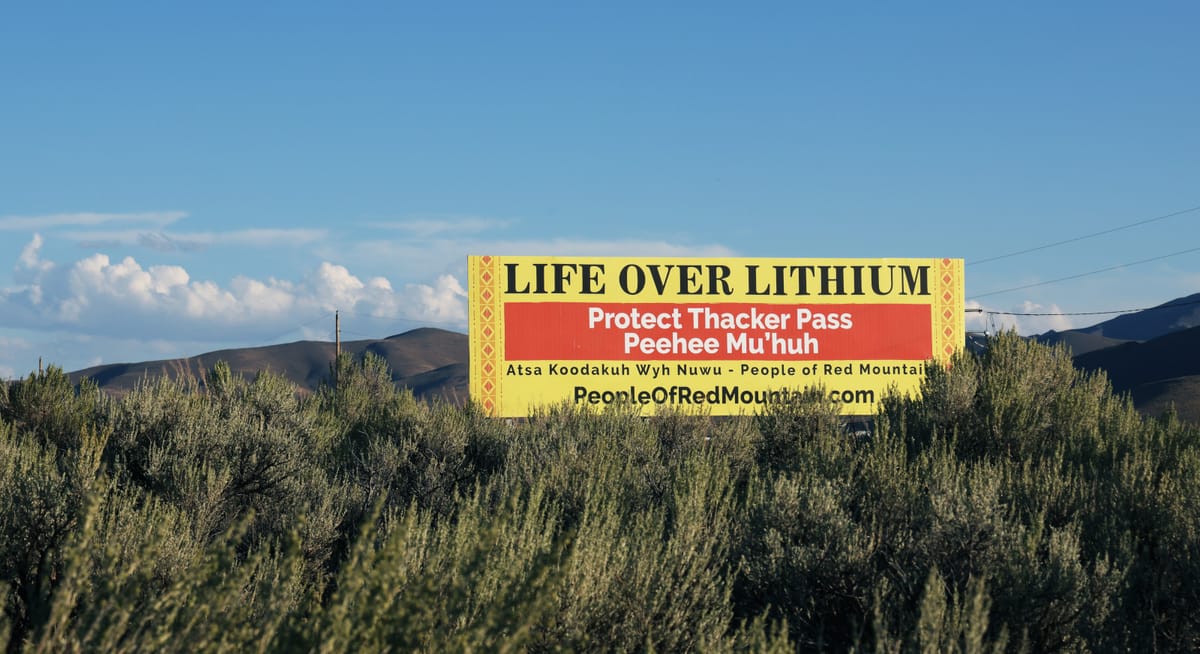
Published by Energy News Network
Add lithium to water in a chemistry lab, and you’ll get an incendiary reaction. The same might be said of opening new lithium mines: The prospect can spark conflicts when it comes to water.
Mining companies and the U.S. government are investing in increased extraction for lithium, which is a critical component in some renewable energy technology, especially electric vehicle batteries and large grid-scale storage batteries.
The Inflation Reduction Act injected the Department of Energy (DOE) Loan Programs Office with about $11.7 billion to support new loans for energy projects, including mines for needed metals like lithium. This builds on earlier Bipartisan Infrastructure Law (BIL) grants for battery material supply chains. The IRA also offers tax credits of up to $7,500 on eligible electric vehicles, creating additional demand for lithium by the auto industry.
With funding from the IRA, DOE and BIL, lithium miners have gained new financial vigor and governmental votes of confidence. Yet some worry what impact this newfound funding will have on the environment.
Domestic mining is still primarily governed by the outdated 1872 Mining Law, which didn’t enshrine environmental protections, but “declared all valuable mineral deposits in land belonging to the United States to be free and open to exploration and purchase,” according to the Bureau of Land Management (BLM) website.
Through the National Environmental Policy Act, environmental impact statements are required ahead of major projects like mines, although some statements have been criticized as rushed or insufficient. But ultimately, it’s up to companies to choose and monitor their own environmental protections and community agreements, even if they’re collecting federal subsidies.
Lithium mining poses a range of risks to biodiversity and groundwater supplies, depending on the methods used. There are three main types of lithium extraction: brine evaporation, hard rock mining and clay mining.
In brine evaporation, groundwater is first pumped to the surface. There, 90% of it is evaporated away to concentrate the lithium brine, with additional freshwater needed to complete extraction.
Hard rock and clay mining often begin with “dewatering,” or removing groundwater to reach the ore, in addition to needing more water to process the ore. These methods also require chemicals such as sulfuric acid for processing, which in cobalt and copper mining has led to contamination of local water systems.
Concerned about the risks, local residents and environmentalists have resisted new mines with tactics from protests to litigation — but a government-supported lithium boom appears to be underway regardless.
New mines emerge
A Center for Biological Diversity map lists more than 125 lithium extraction projects in the western U.S. alone. Seven are inactive, and the majority are in various stages from exploration to development. Most of the proposed mines are in Nevada, predicted as a future “Silicon Valley of lithium.”
Albemarle’s Silver Peak mine in Nevada, a brine evaporation mine that has come under scrutiny for depleting groundwater aquifers in an increasingly-arid region, is the only currently active U.S. lithium mine. That’s likely to soon change, since the IRA has incentivized metal and mineral extraction in the United States and in countries with a U.S. free trade agreement.
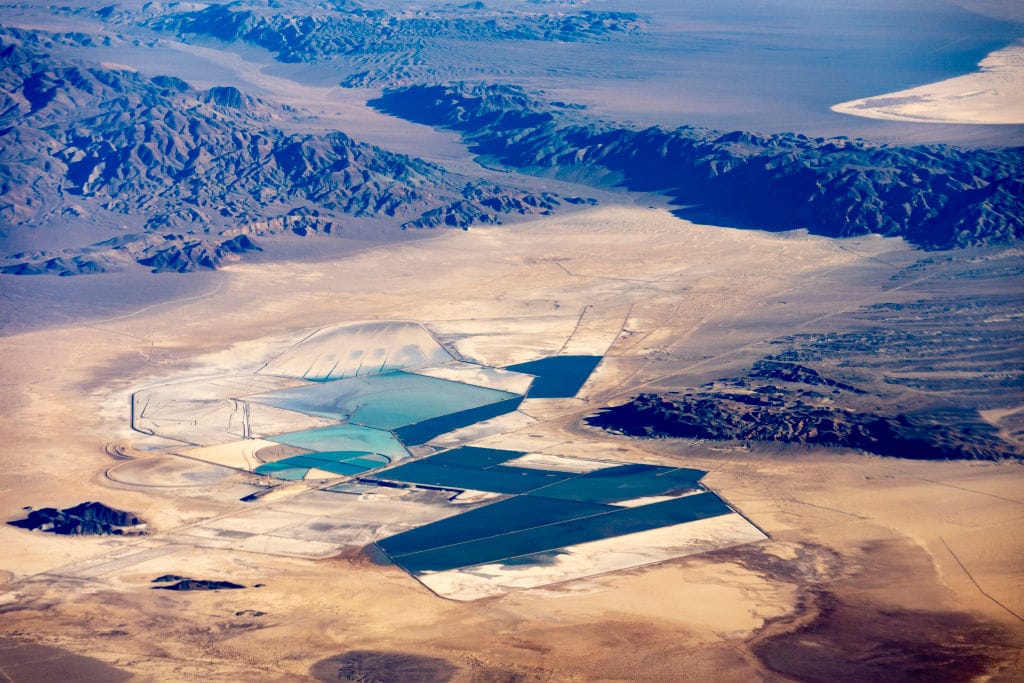
Through its loan support and EV sales incentives, the IRA has made lithium mines more profitable, and less financially risky for companies opening new ones. Several lithium companies, including ioneer, Allkem and Albemarle, lobbied for the IRA’s passage or for provisions within it. A 2023 IRA impact report from S&P Global noted “aggressive mine capacity additions” for lithium planned in countries including the United States, Chile and Australia.
Domestically, most lithium deposits are in the West, where water supplies are already stressed.
The Center for Biological Diversity has mapped more than 100 lithium projects across the Western United States. Lithium is an essential metal in batteries for electric vehicles and large grid-scale battery storage. The U.S. government is pouring billions of dollars into incentives to mine lithium to speed the transition away from fossil fuels.
“There’s a critical minerals and specifically a lithium rush unfolding, especially, but not exclusively, across the western U.S.,” says Providence College political scientist Thea Riofrancos, who specializes in studying the impact of resource extraction on communities. She adds that some of the mining interest predates the IRA, “but it’s picked up a lot since the IRA, because that sent such clear signals.”
Yet new mines pose risks to the region’s biodiversity. In a lawsuit against a Rover Metals exploration project, the Center for Biological Diversity and Amargosa Conservancy alleged that even exploratory drilling near springs in the Ash Meadows National Wildlife Refuge in Nevada would threaten endangered and endemic species. Active mines can have even bigger impacts.
“We need lithium as a part of our transition off of fossil fuels, but it can’t come at the expense of biodiversity or our most precious protected areas,” Patrick Donnelly of the Center for Biological Diversity, said in announcing the lawsuit. “Some places have to be off-limits to resource extraction, and Ash Meadows National Wildlife Refuge is at the top of the list.”
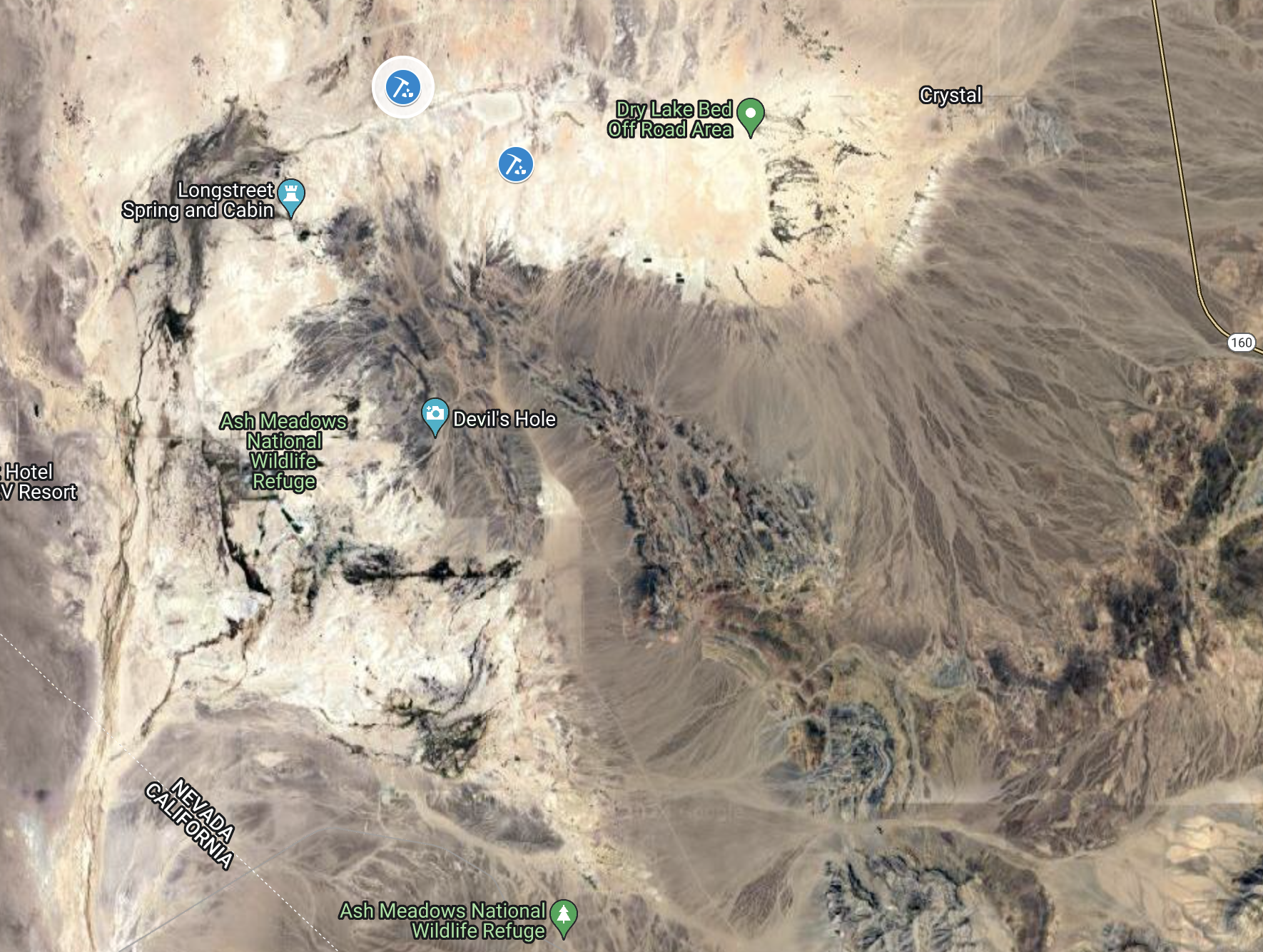
Thacker Pass on track
The Thacker Pass mine run by Lithium Americas is on track to become the second active lithium mine in the United States. The project in far northern Nevada may be indicative of what’s to come as more government-fueled mines pop up.
The lithium clay mine is under construction, with most Phase 1 construction costs covered by IRA support: General Motors is investing $650 million in exchange for the mine’s lithium. The U.S. Department of Energy provided a conditional $2.26 billion low-interest loan. Permitting came earlier, from President Trump’s administration. In 2028, the Thacker Pass mine is expected to reach full capacity production.
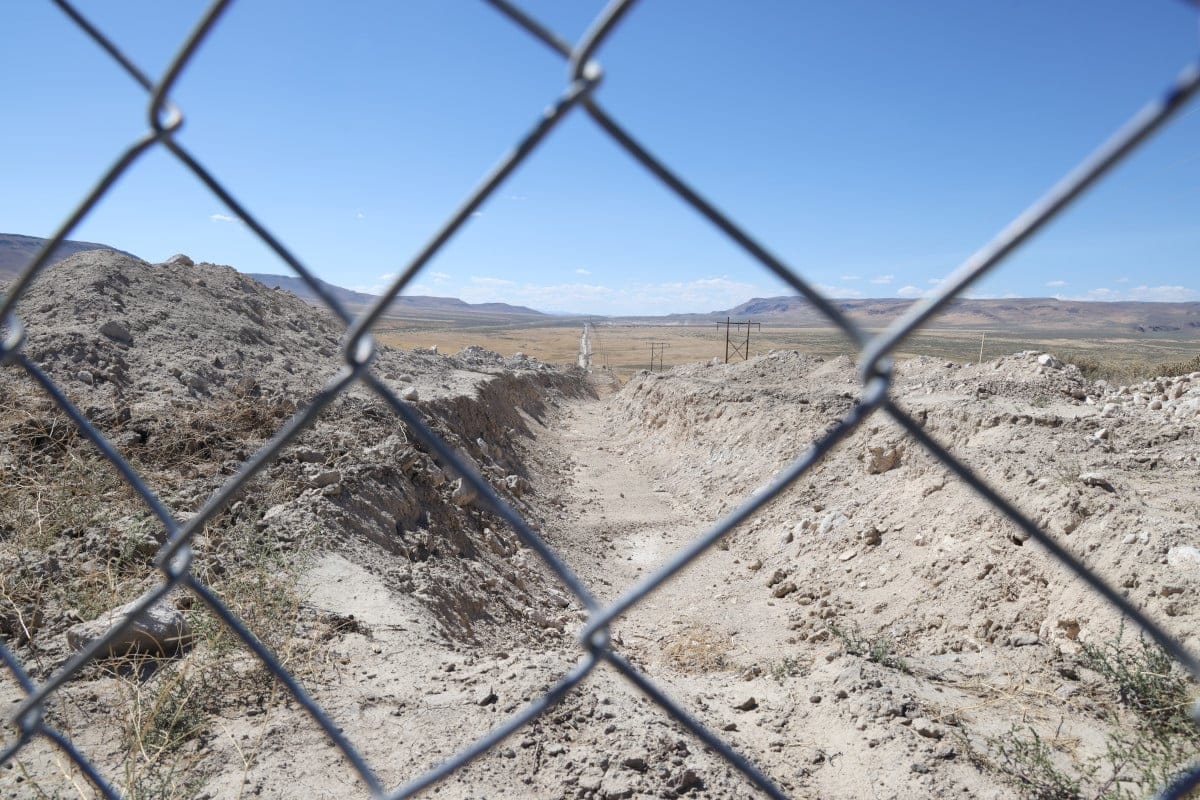
The DOE said the loan will provide General Motors with enough lithium for 800,000 electric vehicles a year and “reinforces the Biden-Harris Administration’s whole-of-government approach to strengthening America’s critical materials supply chain, which is essential to building America’s clean transportation future and enhancing our national and energy security.”
Questions about ‘voluntary’ mitigation
Lithium Americas plans to recycle and reuse withdrawn water an average of seven times. Its Phase 1 water consumption is estimated to be about 929 million gallons per year, equal to “around five alfalfa irrigation pivots,” according to the company’s blog.
Lithium Americas purchased existing agricultural water rights, so the operation won’t increase groundwater withdrawal, although existing groundwater withdrawal may still be unsustainable. It has also outlined plans for nearby habitat restoration. A post-mining reclamation plan is intended to reduce long-lived environmental impacts by refilling pits and restoring the surface.
But implementing and tracking mitigation strategies like these is left up to the companies.
“What I think is concerning is the proliferation of lots of voluntary governance mechanisms that companies don’t have to do,” says Riofrancos. “What’s important — and it sounds old-fashioned, maybe — is regulation that’s binding; that’s enforceable; that carries sanctions, fees, punishments, fines, whatever, if the regulations are not obeyed.”
Riofrancos believes such regulations, plus sustained protests against irresponsible mines, could get the mining industry to “do better.” She says the IRA-supported DOE loan program represents a missed opportunity to tie robust regulations to mining projects: “It’s very light on guardrails and requirements for loan recipients.”
It’s also unclear how much mitigation is realistically possible.
“There’s ways to tinker around the edges, but ultimately, there’s no mitigating an open-pit mine,” Donnelly, the Great Basin director of the Center for Biological Diversity, said in an interview. “(These mines) cause impacts to the water table, impacts to wildlife, impacts to local and Indigenous communities.”
He believes IRA loans and other federal subsidies help new mines get permitted in spite of environmental risks: “The DOE’s kind of waving a magic wand and saying, ‘This mine is okay to permit.’ ”
But the exact risks of each new lithium mine are tricky to measure. The three different types of mines can have different effects, depending on variables including location, says David Boutt, a hydrogeology researcher and professor at the University of Massachusetts-Amherst. Companies are often reluctant to share data that would help scientists evaluate impacts, he says.
“It’s hard to establish a number, like, ‘This one has like a 30% less environmental impact than the others,’ ” Boutt says. “We don’t see these numbers, because a lot of the impacts are local and hard to quantify.”
Sacred site to become lithium mine
Yet for people living near mining sites, the risks can feel tangible. Dean Barlese, an elder from the Pyramid Lake Paiute Tribe, says he’s opposed to the Thacker Pass mine both because it’s at an Indigenous sacred site, and because his people’s lives are intertwined with the local ecosystem.
“A lot of people think it’s just a desert wasteland,” he says. “But the medicines we use are still out there. As Native people, we still gather our food, roots, berries — we’ve survived here for thousands of years.”
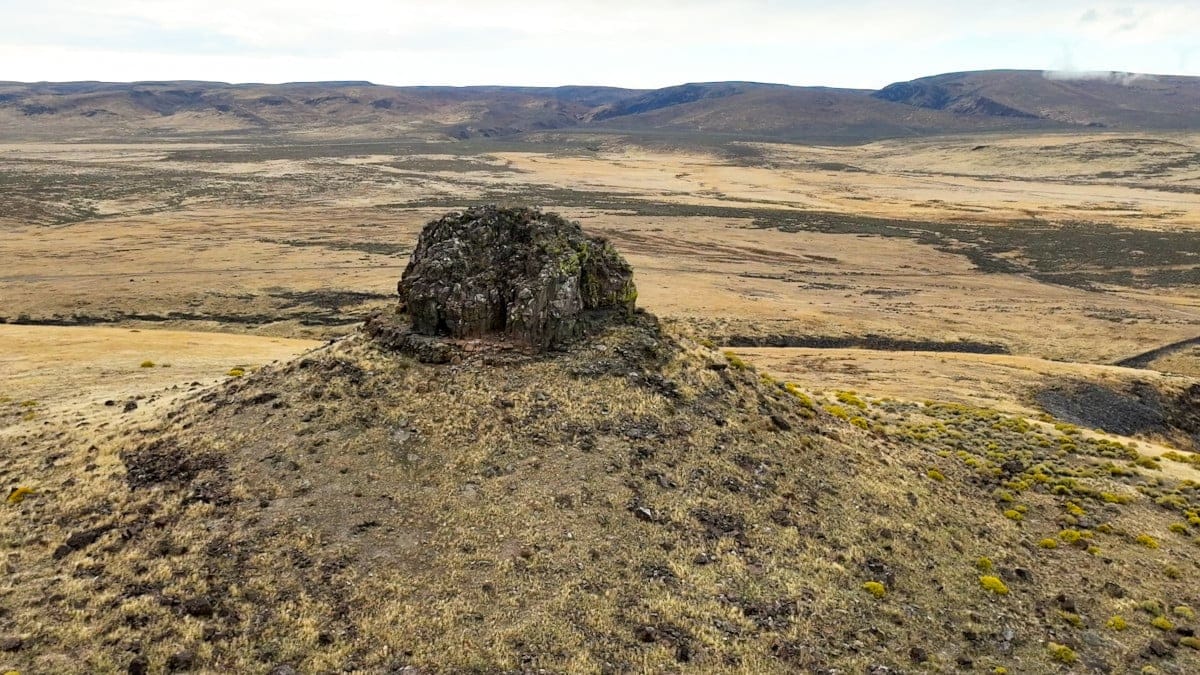
Barlese says he’d rather not see mining projects near Indigenous communities at all, regardless of community benefits agreements and environmental mitigation plans. “I would encourage the public to really look into the devastation that getting a bit of lithium does.”
Lithium demand could be reduced if investments were made in public transit and walkable communities, so fewer people were buying cars, Riofrancos says. Although the IRA includes investments in battery recycling, it doesn’t incentivize efforts to reduce surging lithium demand. Instead, it supports extraction to meet the demand, and helps ensure that the extracting companies can profit.
“ ‘Green energy’ is not green energy,” says Barlese. “Money speaks louder than anything else.”
Another possible solution to the mining debate would be an energy transition that uses less lithium.
“One way to reduce demand for lithium (or any battery metals) would be to make smaller batteries, or batteries that are more resource-efficient,” says Riofrancos. Two-thirds of current EV models are SUVs or large vehicles; small- and medium-sized EVs account for only a quarter of EV sales in the United States. Incentivizing smaller vehicles, which can use smaller batteries, could ultimately lead to fewer lithium mines.
Other battery chemistries are another option.
“Given the complexity of getting a permit, of getting the social license, of having everything in place, it’s going to take a long time (to open new mines),” says Boutt, the hydrogeologist. “And perhaps by the time we get to the point where we are developing those resources, we’ll have different battery technology where we’re not as reliant on lithium.”
